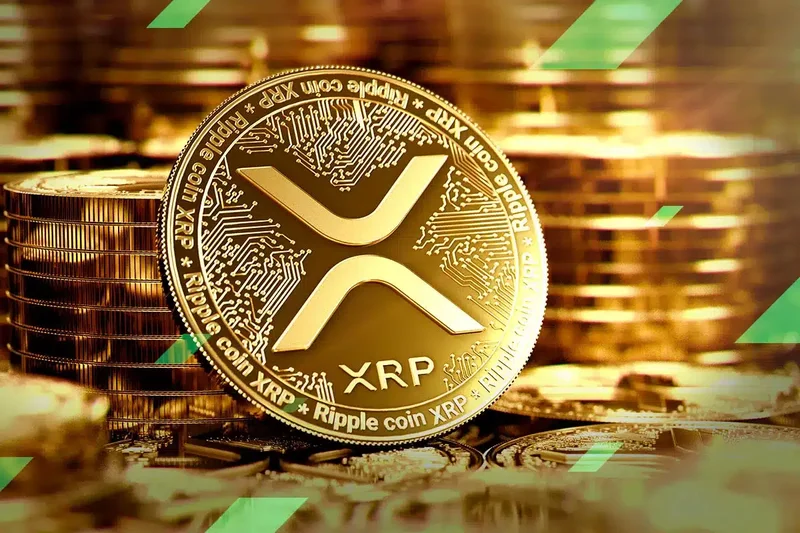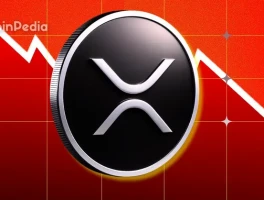I believe we’re standing at the edge of a precipice, looking out at a complete reinvention of how value moves around our planet. For years, we’ve talked about it in theoretical terms, in whitepapers and late-night forums. But right now, in October 2025, the theory is becoming breathtakingly real. The air is electric with anticipation, and it all centers on a series of SEC deadlines for a spot XRP ETF. This has led to widespread speculation, with some asking if an XRP ETF on Verge? Top Expert Drops Major Clue. When Nate Geraci, a respected voice in the space, looks at the flurry of amended S-1 filings from giants like Grayscale, Bitwise, and WisdomTree and simply says, "Getting close," you can feel the ground shifting.
But I need you to understand something crucial. This isn't just about a ticker symbol like "GXRP" appearing on a trading screen. That's the symptom, not the cause. The potential approval of an XRP ETF is a mainstream financial flare being shot into the sky, signaling that the architecture of global finance is about to be rewritten. It’s the institutional world finally acknowledging what many of us in the tech space have known for years: the old ways are too slow, too expensive, and too siloed for the 21st century. The approval of these financial products would be a formal invitation for Wall Street to join a revolution that has been brewing in the digital trenches for over a decade.
The real question isn't whether XRP price will pump on the news today. The real question is: what kind of world are we building on the other side of this shift?
The Empire Strikes Back... By Joining the Rebellion
For the longest time, the narrative has been a simple one: David vs. Goliath. On one side, you have Ripple and its native token, XRP, built for speed and efficiency, a technology designed to make cross-border payments nearly instantaneous. On the other, you have SWIFT, the Goliath of global finance. Founded in 1973, it’s the network that connects over 11,000 banks—the decades-old, trusted, and admittedly clunky system that transmits payment messages for the bulk of the world's international transactions.
But something extraordinary is happening. The Goliath isn't just trying to crush David. It’s trying to become David. SWIFT is now actively developing its own blockchain ledger in partnership with Consensys, aiming to handle real-time settlements and support "tokenized assets"—in simpler terms, this means turning real-world things like stocks or bonds into digital tokens that can be traded instantly on a blockchain. When I first read that SWIFT, the bedrock of the 20th-century financial system, was building a blockchain, I honestly just leaned back and smiled. This is the moment the revolution becomes an evolution. This is the ultimate validation.

Think of it like this: it’s as if the legacy postal service, after decades of watching email take over, suddenly announced it was building its own global fiber-optic network. It doesn't invalidate email; it proves, beyond any doubt, that instant digital communication is the non-negotiable future. SWIFT’s move isn't a death knell for Ripple XRP; it's the loudest possible endorsement of the very technology Ripple has been championing all along. So, what happens when the very institution that defined the old rules starts playing by the new ones?
A Tale of Two Futures
This sets the stage for a fascinating dynamic. We now have two powerful forces pushing toward the same goal from different directions. Ripple is the nimble innovator, forging partnerships in key corridors like Japan with SBI Remit and the Middle East with Pyypl, proving its use case in the real world, one remittance at a time. It’s a bottoms-up approach, building a network based on superior technology and efficiency. You can see its tendrils extending beyond finance, with firms like Webus/Wetour integrating XRP into loyalty programs. This is organic, demand-driven growth.
SWIFT, on the other hand, is taking a top-down approach. It already has the entire global banking system as its captive audience. Its challenge isn't adoption; it's technology and integration. Can it truly overhaul its legacy infrastructure without collapsing under its own weight? Can it convince thousands of risk-averse institutions to embrace a new paradigm? This isn't just a technical problem; it's a colossal exercise in coordination and trust.
And while these two giants circle each other, we see the messy, human reality of a market in transition. We see XRP news about so-called "whales" selling off 440 million tokens, causing the price to dip and spreading fear. This volatility is nothing new; we've seen headlines before like XRP Price News: Ripple Plunges 40% Before Recovering to $2.20. But is this truly a sign of panic, or is it the inevitable growing pains of a system transitioning from a niche asset to a global financial instrument? I see it as the latter. It’s the churn and volatility that precedes true maturation. We're witnessing the system stress-test itself in real-time, preparing for a world where liquidity is measured in the trillions, not billions. This isn't just about faster transactions, it's about creating a global, interoperable language for value, a seamless fabric where money and data can move at the speed of light without friction, without gatekeepers, without waiting three business days for a wire to clear.
Of course, with this incredible power comes profound responsibility. As we build this new financial plumbing for the world, we have to ask ourselves if we're creating a more equitable system or just a more efficient version of the old one. The goal must be to lower the barrier to entry for everyone, not just to make it easier for the big players to trade with each other. That’s the ethical tightrope we all must walk.
The Real Story Isn't Who Wins, But That the Game is Changing
Forget the headlines that scream about a "war" between Ripple and SWIFT. That’s a 20th-century way of looking at a 21st-century transformation. This isn't a zero-sum game. The existence of a blockchain-powered SWIFT and a thriving Ripple ecosystem are not mutually exclusive; in fact, they are mutually reinforcing. They signal a future with multiple, interoperable networks for value, just as we have multiple networks for information today. The real winner here is us—the end-user, the small business, the global citizen who will one day send money across borders as easily as we send a text message. The competition is simply the catalyst, the evolutionary pressure that is forcing a century of financial inertia to finally give way to breathtaking innovation. We are in the opening moments of a new era. Watch closely.

